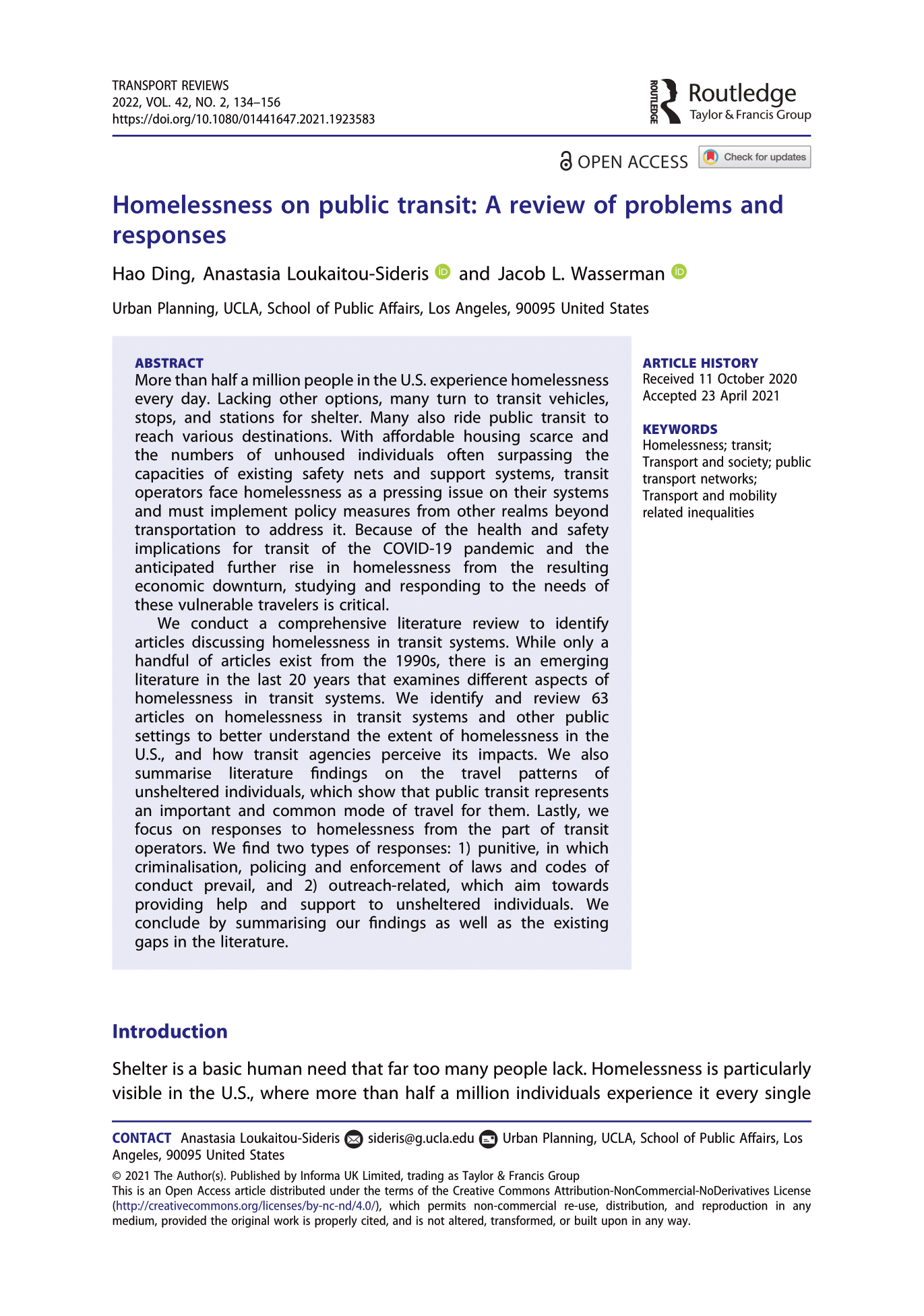Date: March 9, 2022
Author(s): Hao Ding, Anastasia Loukaitou-Sideris, Jacob L. Wasserman
Abstract
More than half a million people in the U.S. experience homelessness every day. Lacking other options, many turn to transit vehicles, stops, and stations for shelter. Many also ride public transit to reach various destinations. With affordable housing scarce and the numbers of unhoused individuals often surpassing the capacities of existing safety nets and support systems, transit operators face homelessness as a pressing issue on their systems and must implement policy measures from other realms beyond transportation to address it. Because of the health and safety implications for transit of the COVID-19 pandemic and the anticipated further rise in homelessness from the resulting economic downturn, studying and responding to the needs of these vulnerable travelers is critical.
We conduct a comprehensive literature review to identify articles discussing homelessness in transit systems. While only a handful of articles exist from the 1990s, there is an emerging literature in the last 20 years that examines different aspects of homelessness in transit systems. We identify and review 63 articles on homelessness in transit systems and other public settings to better understand the extent of homelessness in the U.S., and how transit agencies perceive its impacts. We also summarise literature findings on the travel patterns of unsheltered individuals, which show that public transit represents an important and common mode of travel for them. Lastly, we focus on responses to homelessness from the part of transit operators. We find two types of responses: 1) punitive, in which criminalisation, policing and enforcement of laws and codes of conduct prevail, and 2) outreach-related, which aim towards providing help and support to unsheltered individuals. We conclude by summarising our findings as well as the existing gaps in the literature.
About the Project
More than half a million individuals experience homelessness every night in the U.S. With the scale of the crisis often surpassing the capacities of existing safety nets — all the more so since the onset of the COVID-19 pandemic — many turn to transit vehicles, stops, and stations for shelter. Many also use transit to reach destinations such as workplaces, shelters, and community service centers. This project investigates the intersections of the pandemic, transit, and homelessness; the scale of homelessness on transit; and how transit agencies are responding to the problem. All told, centering the mobility and wellbeing of unhoused riders fits within transit’s social service role and is important to improving outcomes for them and for all riders.


